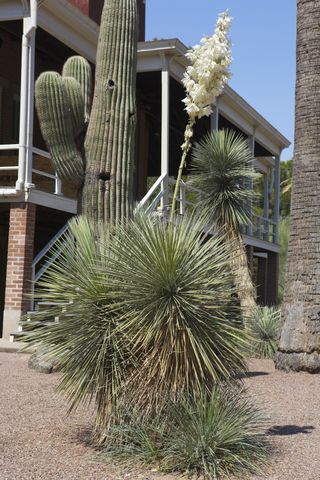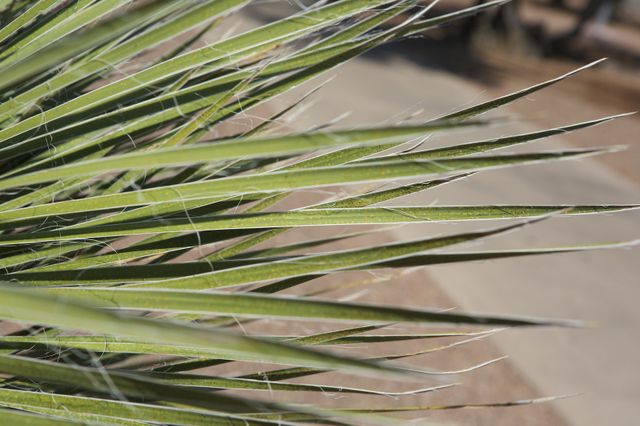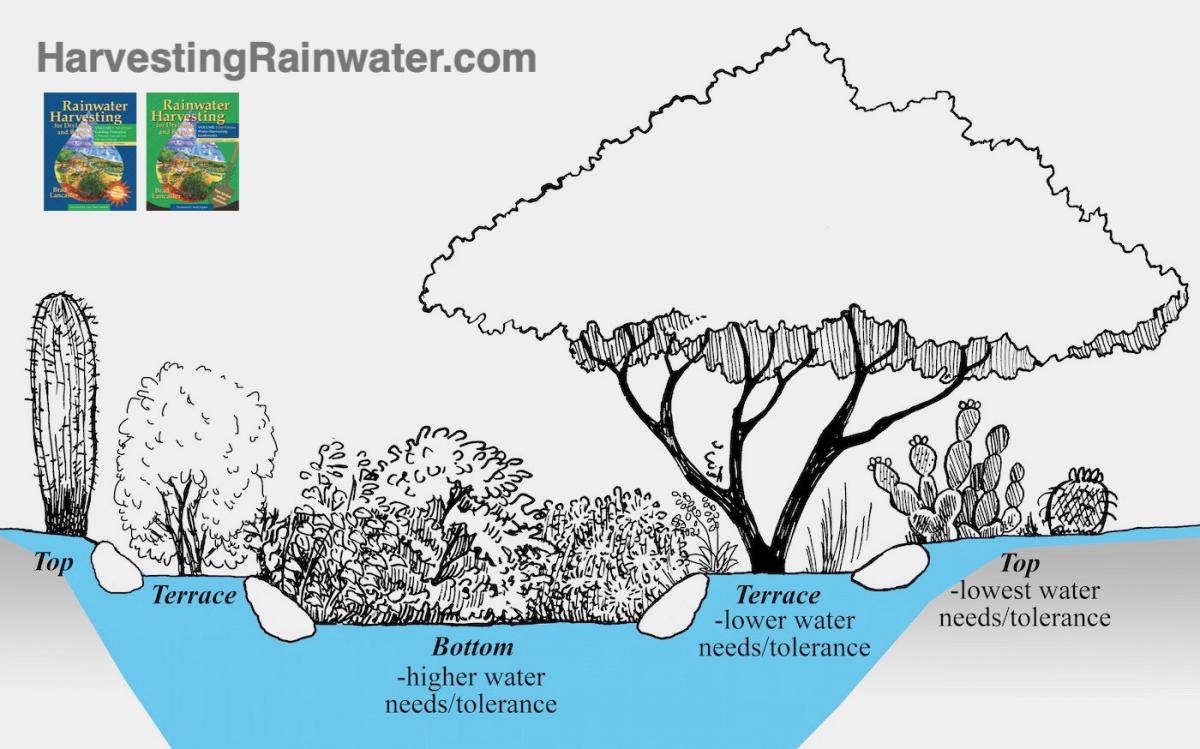

Family:Asparagaceae
Common Names:
- English: soaptree yucca
- Spanish: palmilla, yuca, sota, datil
-
O'odham: Takwi
Scientific Name: Yucca elata
Rain Garden Zone: Y. elata does well in the terrace Rain Garden Zone.

Reproduced with permission from "Rainwater Harvesting for Drylands and Beyond" by Brad Lancaster, HarvestingRainwater.com
Flowering Season: Spring
Characteristics: Y. elata is a woody succulent with an upright form that can grow up to 20 ft in
height (1). Leaves grow in a dense formation, are blue-green in color and can be up to 38 inches
in length with a pointed end (1). Flowers grow upon a stalk extending upwards, are large and
white in color (1).
Landscape Cultivation: The succulent considered low water use, prefers full sun but is also cold
hardy down to about 0°F, and can be found growing in deserts, grasslands and mesas (1, 2).
Ethnobotany:
Wildlife:
Flowers attract moths and butterflies, while cattle eat the young flower stalks (2). The
plant is a larval host for the yucca giant butterfly (2).
Edible:
Young flower stalks and the lower part of the stem can be harvested, peeled, baked and
dried to later be infused into water (3). Flowers can also be eaten raw or in preserves
(3).
Other:
The roots and trunk of the plant can be used to produce soap or shampoo (1). The fibers
from the leaves can also be used to make rope, baskets, sandals, clothing and other
textiles (1).
References:
1. UA Campus Arboretum
2. Lady Bird Johnson Wildflower Center
3. Niethammer, Carolyn J. (1987). The Tumbleweed Gourmet – Cooking with Wild
Southwestern Plants. University of Arizona Press.
For more information on this plant, see the Campus Arboretum species description page.

